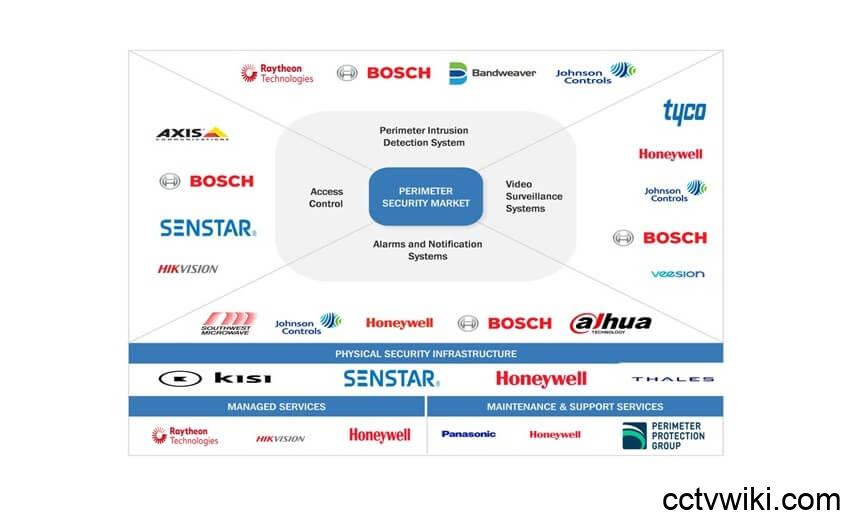Securing the Perimeter: A Growing Need in a World of Threats
Perimeter security systems are the unsung heroes, working tirelessly to shield critical infrastructure from both internal and external threats. These systems, a blend of technologies and strategies, stand guard against unauthorized access and potential damage to vital assets like government buildings, military bases, industrial complexes, and commercial sites.
Think of it as a layered defense: perimeter intrusion detection, video surveillance, alarms, access control, and physical barriers all working in concert. The rise in terrorist activities worldwide has undeniably fueled the demand for these robust security measures. Increased vigilance against illegal arms and drug trafficking, coupled with stricter border and seaport controls, has further boosted the need for advanced screening, scanning, and biometric authentication systems.
Governments around the globe are also playing their part, enacting policies and regulations to bolster the cyber and physical security of critical infrastructure. This focus on cybersecurity has evolved significantly since the early days of simple viruses.
The threats of the 2000s—spyware, malware, and botnets—have given way to today’s incredibly sophisticated cyberattacks. We’re now facing an unprecedented surge in cyber espionage and cybercrimes targeting personal data and public institutions. Fortunately, next-generation public safety and security solutions are stepping up to the challenge, promising to save trillions of dollars by protecting vital infrastructure.
Terrorism and Infrastructure Security: Driving Market Growth
The perimeter security landscape has expanded dramatically, thanks to technological leaps in areas like access control, video surveillance, thermal imaging, and video analytics. Government, industrial, military, and commercial sectors are increasingly vulnerable to terrorist attacks, sabotage, and intrusions, leading to a global surge in security risks and breaches.
To combat these threats, organizations are implementing comprehensive perimeter security systems. Security vendors are responding with advanced solutions, system integration services, consulting, training, risk assessments, and ongoing maintenance. They’re also working to seamlessly integrate their offerings with clients’ existing security strategies, ensuring the protection of employees and critical assets.
Several factors are converging to drive market growth: rising perimeter intrusions, theft, cross-border terrorism, illegal immigration, stricter government regulations, the development of industry standards, the proliferation of IoT, innovative city projects, and the adoption of cutting-edge techniques like IP-based video surveillance, wireless technology, motion sensors, and drones. The increasing automation and the rise of smart city initiatives are also creating new opportunities for players in the perimeter security market.
Of course, challenges remain. False alarms, high maintenance costs, and the growing sophistication of cyberattacks are ongoing concerns. Additionally, the lack of technical expertise, the need for specialized training, high initial costs, and potential privacy violations can restrain market growth.
Who’s Who in Perimeter Security
According to MarketsandMarkets, the global perimeter security market is projected to expand from USD 81.4 billion in 2024 to USD 114.2 billion by 2029, representing a compound annual growth rate (CAGR) of 7.0%.
While the market is experiencing some fluctuation due to the impact of COVID-19 and economic factors, it continues to evolve and diversify across different regions.
Companies are increasingly focused on leveraging data to improve product quality and inform business decisions. Experts note the convergence of technologies like cameras, drones, radar, LIDAR, and facial recognition, promising to revolutionize future perimeter security solutions. It’s important to remember that perimeter security also encompasses human elements like passwords, physical access cards, and security personnel.
Trends and Disruptions: Shaping the Future of Perimeter Security
The shift from traditional perimeter security to AI- and ML-based solutions is a key trend.
AI and ML are automating perimeter security processes, significantly reducing the time required to identify security breaches. Security teams can now forecast, prevent, detect, and respond more effectively, gaining deeper insights into potential threats and enabling more proactive responses.
The range of technological possibilities is constantly expanding, with drones, advanced sensors, video surveillance, and artificial intelligence all playing a role. These automated solutions are being deployed across various sectors—retail, BFSI, and IT—to improve incident response, accelerate threat detection, eliminate alert fatigue, ensure secure software development, and streamline business processes.
The perimeter security market is evolving rapidly in North America, Europe, Asia Pacific, the Middle East & Africa, and Latin America. Advancements in fence sensors, buried sensors, above-ground sensors, video analytics, access control, and perimeter intrusion detection systems are driving significant growth.
These solutions incorporate smart technologies like AI and ML, alongside physical security measures like fences, gates, and lighting. The ultimate goal is to protect data and resources by implementing effective equipment and strategies at the network’s edge. Perimeter security plays a vital role in proactive system protection and is an integral component of a broader security framework.
Best practices in perimeter security include threat identification, surveillance detection, and pattern analysis. Perimeter security is essential in a variety of sectors. For example, airports require robust security to protect their extensive properties. Similarly, train stations and other high-traffic areas rely on perimeter security to safeguard large numbers of people from potential attacks.
The popularity of perimeter security solutions is driven by their ability to secure large areas with multiple intrusion points. Ongoing IoT development has enabled more efficient and accurate perimeter monitoring. Digital speakers, security cameras, and access control devices can now receive, process, and transmit data via IT networks.
Smart technologies are providing powerful solutions to meet perimeter safety standards, enabling rapid incident management and response. In the future, perimeter security has the potential to be a fully integrated component of a networked technology system, capable of analyzing data to identify potential threats. Aerial surveillance using balloons and drones is another exciting development, and self-driving security patrol vehicles equipped with CCTV, sensors, and audio/visual capabilities may soon be a reality.
Find the full report here.

